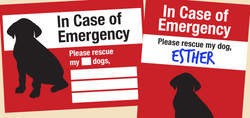Road trips make for great dog-friendly travel because chances are you and your pup have already hit the road together. You may not have traveled much with your cat yet, but take a few warm-up rides before you go and increase the distance gradually.
Shop for cat or dog car seats far enough in advance that you can both get used to the one you pick. For small dogs, puppies and cats, look for basket-style seats with a comfortable harness. Never let your dog hang his head out the window—the debris could scratch his eyes or damage his throat.
Stop frequently for leg-stretching and bathroom breaks and bring along dry food as snacks or treats. If you leave your pet in a car seat alone for a few minutes, make sure the temperature is comfortable and provide appropriate ventilation. The temperature in a parked car in warmer months or climates can kill your pet in a matter of minutes.
Shop for cat or dog car seats far enough in advance that you can both get used to the one you pick. For small dogs, puppies and cats, look for basket-style seats with a comfortable harness. Never let your dog hang his head out the window—the debris could scratch his eyes or damage his throat.
Stop frequently for leg-stretching and bathroom breaks and bring along dry food as snacks or treats. If you leave your pet in a car seat alone for a few minutes, make sure the temperature is comfortable and provide appropriate ventilation. The temperature in a parked car in warmer months or climates can kill your pet in a matter of minutes.





 RSS Feed
RSS Feed
